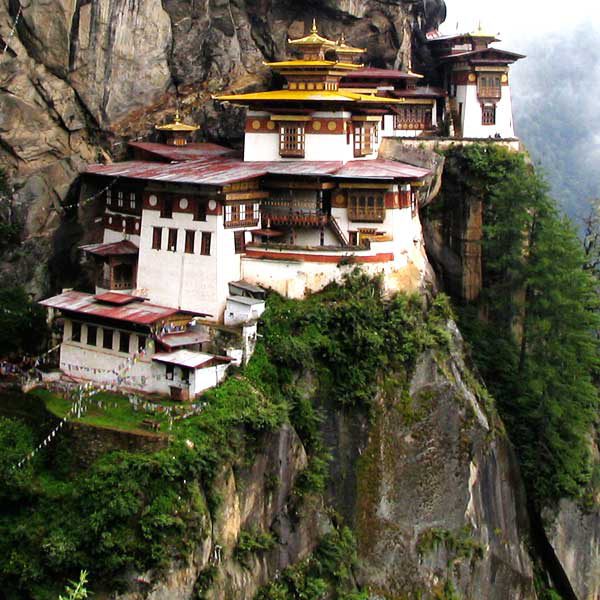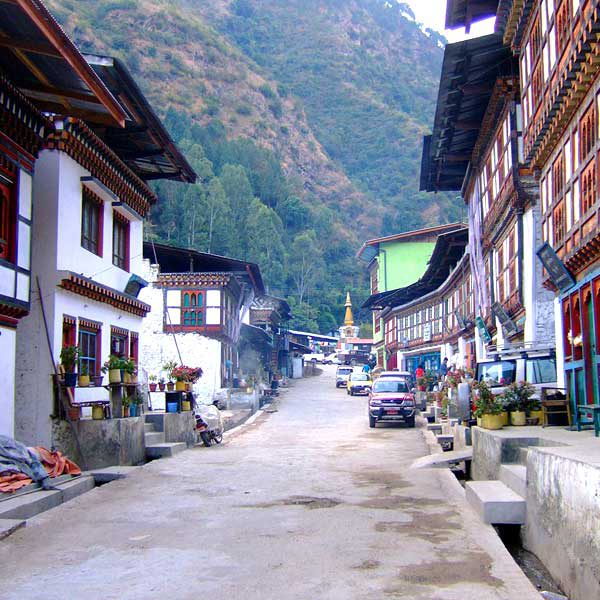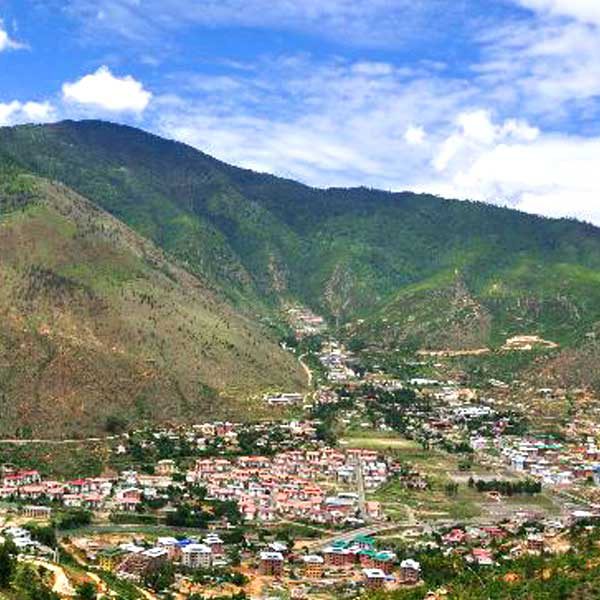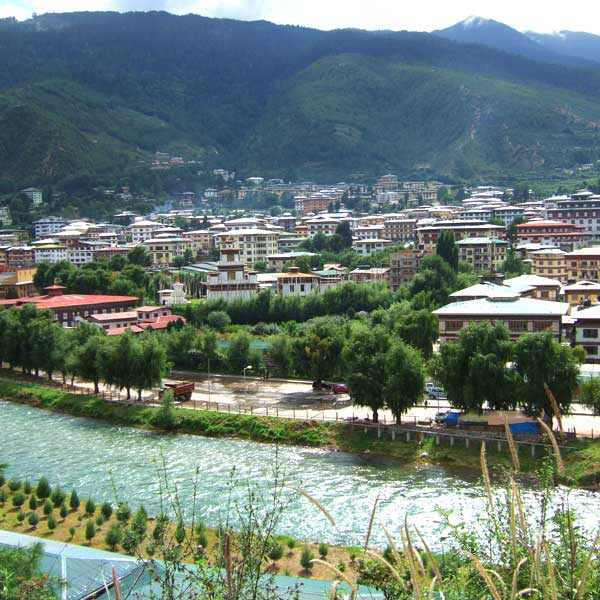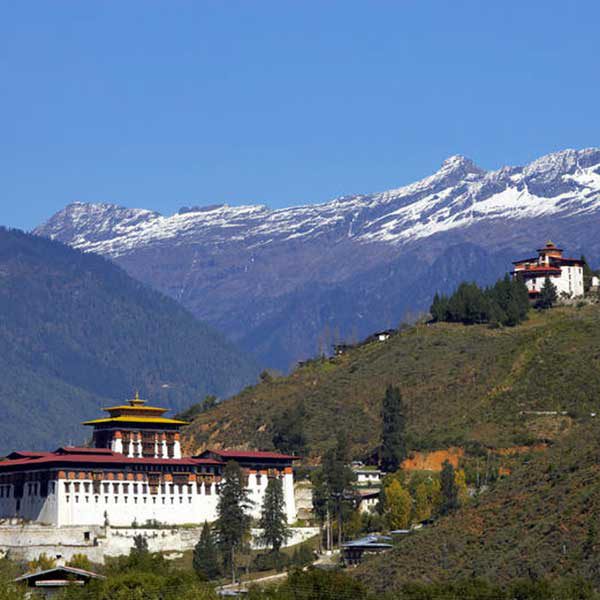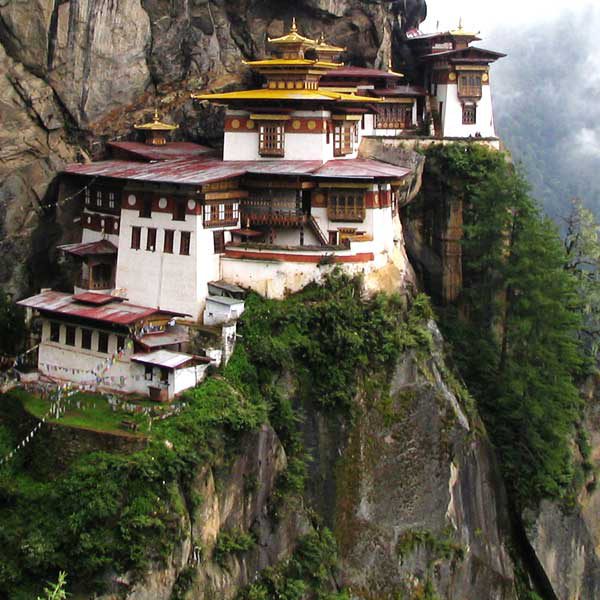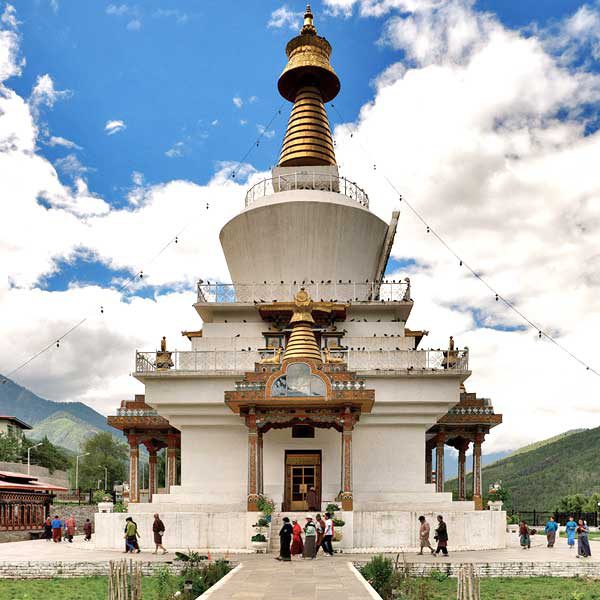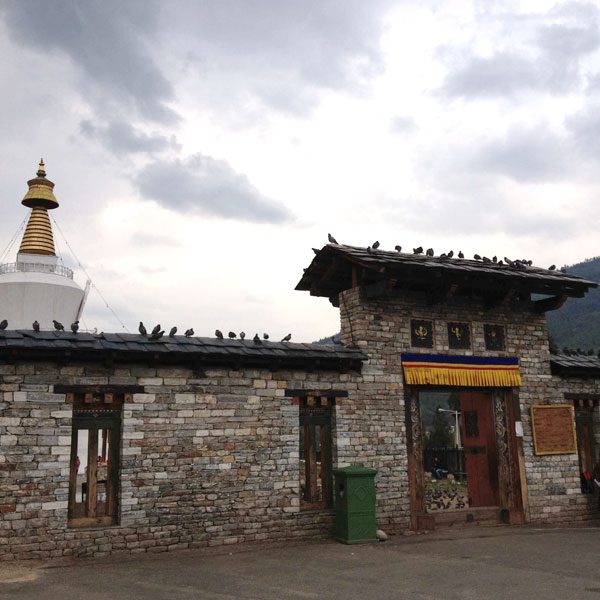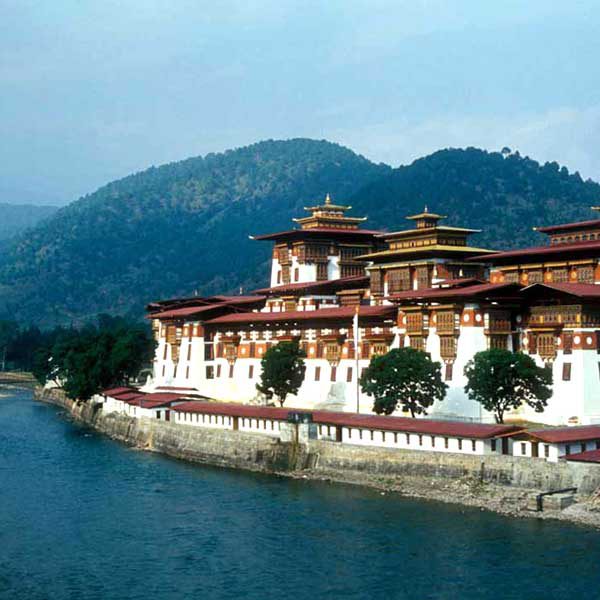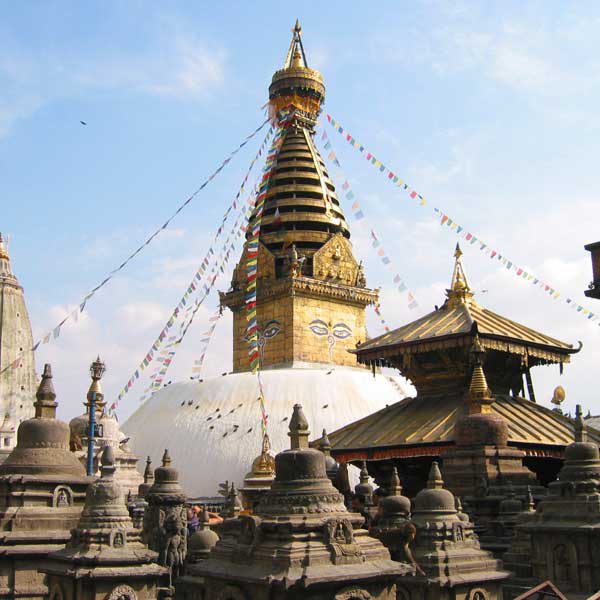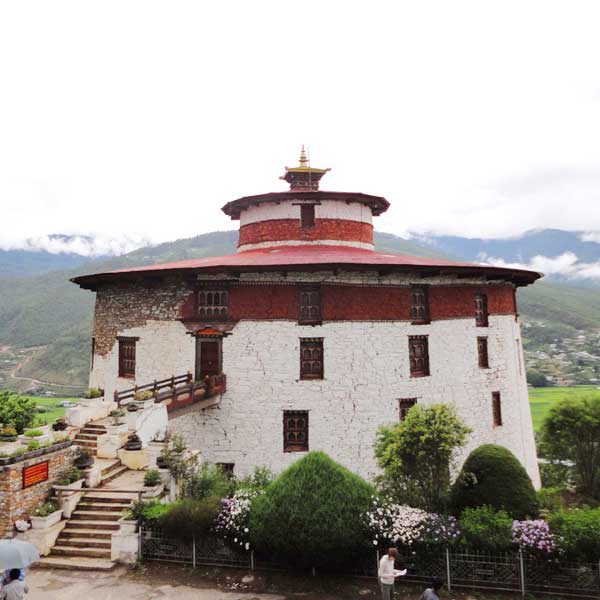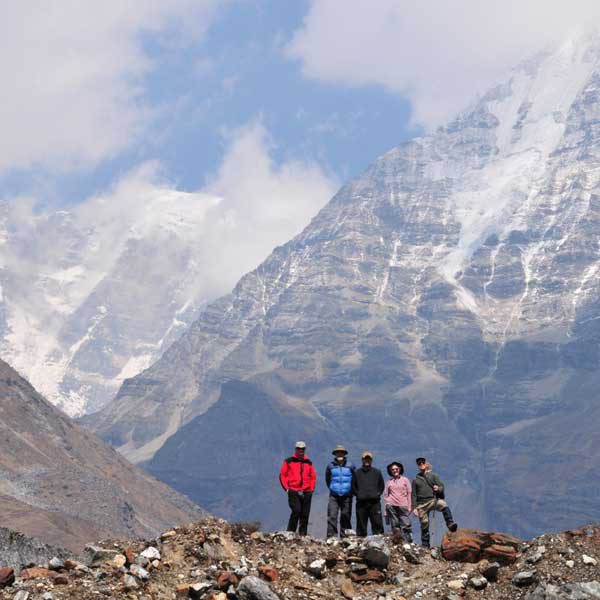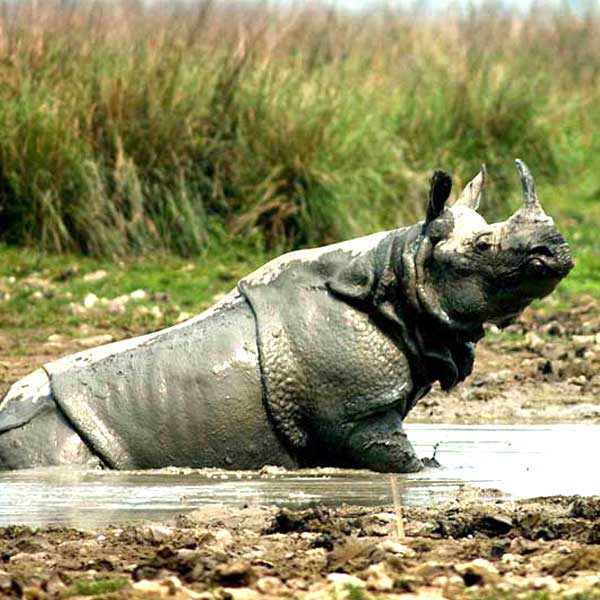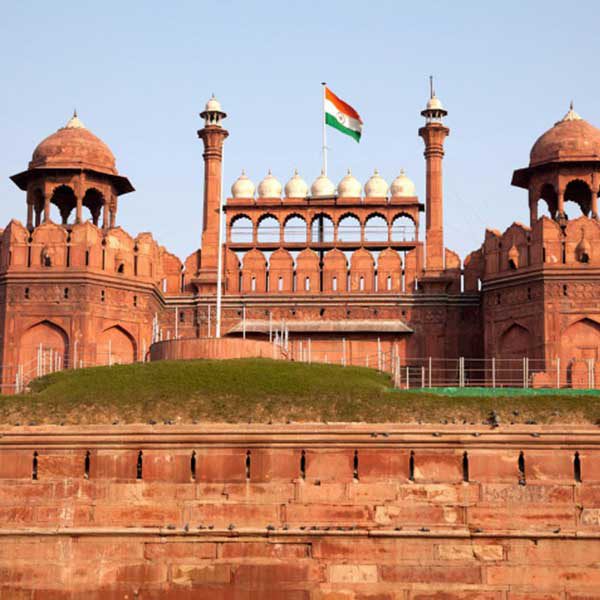Description
Day 01: Arrival– Paro – Thimpu (By Flight)
In the morning board the flight for Paro.
On arrival in Paro, you will be welcomed by our your accompanying guide in Paro Airport. Later drive to Thimpu. If time permits a short sightseeing of Thimpu. Visit of Buddha point (Kuensel Phodrang) from where you can get a good overview of the Thimphu valley. You can pay your obeisance and offer prayers to the Buddha, the largest statue in the country.
Overnight in hotel.
Day 02: Thimpu
Morning visit Simply Bhutan Museum (Closed on Sundays) & Folk Heritage Museums, a fascinating testimony of Bhutan’s living traditions.
Also visit National Memorial Chorten, within which there are finely, executed wall paintings and delicately fashioned statues which provide deep insight into Buddhist philosophy.
In the afternoon visit Motithang Takin Preserve also known as the Thimpu Zoo by many is a small natural preserve for the Takin Bhutan’s national animal. It was originally a mini zoo, but it was converted in a preserve later on as the Takin.
Overnight at the hotel in Thimpu.
Day 03: Thimpu – Dochula– Gangtey
In the morning drive to Gangtey across Dochula pass (3080m) enjoying fascinating mountain views, mani wall and prayer flags. If skies are clear, you will see the highest peaks of the Bhutan from the pass.
On arrival in Gangtey, check in at the hotel.
Later in the afternoon visit Gangtey Goempa, perched on a small hill that rises from the valley floor; is the only Nyingmapa monastery on the western side Bhutan.
Overnight in the hotel.
Day 04: Gangtey– Bumthang
In the morning drive to Bumthang.
Afternoon you will visit Kurje Lhakhang, Jambey Lhakhang and Tamshing lhakhang
Tamshing lhakhang, founded in 1501 by Pema Lingpa, contains interesting and ancient Buddhist wall paintings. Kurje Lhakhang is one of the most sacred places in the kingdom as Bhutan’s “patron saint”, Guru Rinpoche meditated here.
Jambey Lhakhang was erected by the Tibetan King Songtsen Gampo in the 7th century, is one of the two oldest in Bhutan (the other being Kyichu Lhakhang in Paro).
Overnight at the hotel in Bumthang.
Day 05: Bumthang / Sochnath
This day start at Menchugang and visit the biggest village in Bumthang, called Dhur, at an elevation of 2900 meters above sea level. The village consists of about 75 households with a recorded population of around 800 people. This single village has three types of inhabitants the Kheps (tax payers) having cattle and farmland, Brokpas (nomads) having Yaks and a third group a combination of the two. This village has two different dialects, the usual Bumthang Kha and the Brokke (nomadic dialect). A walk above the village to gain an aeriel view is interesting. Descend down to the river where the traditional water-driven flour mill can be visited. This traditional flour mill used to be a source of livelihood for the people of Dhur village however was abandoned after the intake channel was washed away by a flash flood. The mill process has since been rehabilitated as it symbolizes an authentic Bhutanese tradition. Continue to trek uphill through the blue pine forest and reach the camp at Schonath (3450m) in hemlock and juniper forest. The hooting of owls through the night is quite common, hence the name the Owl Trek. Overnight in the camp.
Day 06: Sochnath / Kitiphu
Trekking through the virgin forest of huge temperate trees like spruce, hemlock, fir, birch and many species of rhododendron intorduces you to the real wilderness of Bhutan. Bamboo is the main undergrowth of this wild forest and during the months of April and May the rhododendrons are in full bloom. After 2 hours trekking you will arrive at the Drange La Pass (3600m). Ascending the Kitiphu ridge brings you to an altitude of 3870m for the night camp. In favourable weather you have a wonderful view of the valley and the panoramic snow capped Eastern Himalaya. The highest mountain of Bhutan Gangkarpunsum (7541m) stands right in front of you when you are on the top of Kitiphu ridge at 4000m.
Day 07: Kithipu / Bumthang
The magnificent sun rise in the morning is a new experience in Bhutan. Climb down to the monasteries of Zambhalha, Chuedak and Tharpaling which brings you into the religious life of monkhood at these historical Buddhist learning centres. Chuedak monastery has 100 Avoloketeshvaras in the form of Chukchizhey (eleven heads) that you will see nowhere else in the country. This afternoon, trek along the ridge of Kiki La and finally follow the traditional trek route between Trongsa and Bumthang (the Royal Heritage Trail) and culmonating in a superb view of Jakar Dzong taht will end your three day trek with many unforgettable memories.
Overnight in Bhumtang.
Day 08: Bumthang / Trongsa
Morning drive to Trongsa.
Arrival in Trongsa and overnight. Later drive to Trongsa. It takes 02 hours’ drive to Trongsa over the Yutong-la pass (3,400m/ 11,155 ft). On arrival in Trongsa, check in at the hotel.
In the afternoon visit Trongsa Dzong. Built in 1648, it was the seat of power over central and eastern Bhutan. Also visit the Museum of Monarchy, Ta-dzong. The museum focuses on the history of the monarchy of Bhutan. It has 11 galleries and a media room where visitors can watch a documentary program on the history of Trongsa.
Overnight at the hotel in Trongsa.
Day 09: Trongsa / Punakha
Morning drive to Punakha. Upon arrival check in the hotel.
Afternoon visit Punakha Dzong, a massive structure built at the junction of two rivers. It was the capital of Bhutan until 1955, and still serves as the winter residence of the monk body. The first King, Ugyen Wangchuck was crowned here in 1907. The fortress has withstood several damages from fire, earthquake and flood. The latest flood of Oct’ 1994 caused great damages to the fortress but miraculously spared the statue of Buddha Jojampa.
Day 10: Punakha – Paro
Morning visit Later drive to Paro. Upon arrival check in the hotel.
Evening visit Ta Dzong, originally built as Watch Tower, it now houses National Museum of the country and boasts antique thangkha paintings, textiles, weapons & armour, household objects and a rich assortment of natural and historic artifacts.
Then walk down the trail to visit Rinpung Dzong, meaning ‘fortress of the heap of jewels’ which has a long and fascinating history. Along the wooden galleries lining the courtyard of the Rinpung Dzong are fine wall paintings illustrating Buddhist lore such as four friends, the old man of long life, the wheel of life, scenes from the life of Milarepa, Mount. Sumeru and other cosmic Mandala. Overnight in Paro.
Day 11: Paro (Tiger Nest)
Toda take an excursion to Taktsang Monastery, the most famous of Bhutanese monasteries. It is said that Guru Rinpoche arrived here on the back of a tigress and meditated at this monastery hence it is called “Tiger’s Nest”. The excursion to monastery takes about 5 hours for round trip.
While return to Paro town visit en route Kyichu Lhakhang, one of the oldest and most sacred shrines of the Kingdom.
Day 12: Paro (Haa Valley Excursion)
Morning full day excursion to Haa Valley. Adjoining the districts of Paro, Chhukha and Samtse, Haa valley is one of the most picturesque places in the Kingdom, spread over an area of 1706 sq. km. During pre-Buddhist era, Haa valley was known for its animist tradition. Inhabitants then were enthused in offering animal blood to their local deities.
A short walk to Kila Gompa a nunnery perched on a steep cliff face at 3500m.
Haa valley BhutanSuch animist belief however was transformed into peaceful Buddhist tradition in 8th century by Guru Padmasambhava. The tantric master, Guru Padmasambhava, subdued the local deities like Ap Chundu and made the guardians of the Buddhist tradition. However, the traces of this belief system are still noticed in the form of festivals and rituals.
In Late afternoon drive back to Paro.
Overnight in the hotel.
Day 14: Paro / Delhi (By Flight)
Morning transfer to airport to board the flight for Delhi. Upon arrival in Delhi connect the another flight for Europe















